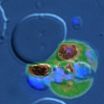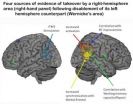(Press-News.org) Scientists at Singapore Eye Research Institute and A*STAR's Genome Institute of Singapore have succeeded in identifying genes for central corneal thickness that may cause potentially blinding eye conditions. These eye conditions include glaucoma, as well as the progressive thinning of the cornea, which may eventually lead to a need for corneal transplantation.
The authors jointly led a multi-centre study involving 55 hospitals and research centres around the world. They performed a meta-analysis on more than 20,000 individuals in European and Asian populations. Their findings were published in the prestigious science journal, Nature Genetics (6 January, 2013).
Central corneal thickness (CCT) is associated with potentially blinding eye conditions such as keratoconus, a condition where the cornea progressively thins and takes on a more conical shape that may eventually require transplantation. CCT has an estimated heritability up to 95% and may determine the severity of one's glaucoma and assist eye doctors in identifying patients with high risk for progression. In fact, it is one of the leading causes of corneal transplantation worldwide.
The Singapore team has had remarkable success identifying the most CCT-associated loci to date prior to this collaborative world-wide effort, by identifying 6 distinct genetic loci in two papers published in 2011 and 2012 via sample collections involving Singaporean Chinese, Indians, and Malays, as well as Beijing Chinese. However, none was found to be associated with common eye diseases like this study has now shown. Overall this new study identified a total of 27 associated loci, including 6 for the keratoconus.
These observations suggest that most of the CCT-associated loci identified from populations of European descent are shared with Asian populations. These findings show that Singapore is well placed globally in eye and genetics research in finding causes for sight threatening conditions. Eye doctors can in the future through genetic analysis better manage such patients, preventing regression of their conditions.
Prof Aung Tin, Deputy Director, Singapore Eye Research Institute (SERI) and a senior consultant ophthalmologist and Head of Glaucoma Service at Singapore National Eye Centre and a co-author of the paper, said, "This was a tremendous achievement, involving many centres from several countries around the world. Singapore played a major role in this work, especially SERI's population based studies of 10,000 Chinese, Malay and Indian people."
Assoc Prof Eranga Vithana, Associate Director, Basic and Experimental Sciences, SERI and a co-author of the paper, said, "This paper identified 6 novel genetic variants that confer increased risk of keratoconus, a condition for which genes were not very forthcoming prior to this study. It once again underlined the inevitability of large scale collaborative studies to unravel genes for common complex diseases and also the advantage of having well characterized large cohorts."
Assistant Professor Khor Chiea Chuen, Principal Investigator, Division of Human Genetics, Genome Institute of Singapore-an institute of the Agency for Science, Technology and Research (A*STAR) and the paper's co-lead author, said, "Yet again, this paper underscores the power of modern genetic approaches studied in very large sample sizes in revealing the hereditable basis of normal human traits, and how the extremes of which may give rise to common diseases."
Prof Ng Huck Hui, Executive Director of the Genome Institute of Singapore said, "I am very pleased that the Genome Institute of Singapore is a part of an international effort to dissect the genetics of eye conditions such as keratoconus and glaucoma. Genomics remains a very powerful tool to identify the link between genetic variations and phenotypes. This study that focuses on central corneal thickness illustrates the value of large scale genetics studies in identifying potential pathways that underlie specific human phenotypes."
Prof Wong Tien Yin, Executive Director of SERI and Chair, Dept of Ophthalmology, National University Health System (NUHS) and the paper's senior corresponding author said, "The investment of SERI in population-based studies over the past decade is now paying off with major discoveries in the causes of common eye diseases. This is a team effort and included more than 50 over clinicians, clinician-scientists, research scientists, research staff, statisticians and most importantly, our patients, who have contributed to the collection of these samples."
Adjunct Assoc Prof Jodhbir S Mehta, Head and Senior Consultant, Cornea Service at Singapore National Eye Centre said, "This is a great achievement in collaborative research and offers new insights into keratoconus."
### END
First in the world - Singapore scientists discover genes responsible for cornea blindness
2013-01-16
ELSE PRESS RELEASES FROM THIS DATE:
Body's ibuprofen, SPARC, reduces inflammation and thus bladder cancer development and metastasis
2013-01-16
Cancer researchers are increasingly aware that in addition to genetic mutations in a cancer itself, characteristics of the surrounding tissue can promote or suppress tumor growth. One of these important tissue characteristics is inflammation – most cancers prosper in and attach to inflamed tissue and so many cancers have developed ways to create it.
A University of Colorado Cancer Center study published today in the Journal of Clinical Investigation shows that the protein SPARC (Secreted Protein Acidic and Rich in Cysteine) acts much like an anti-inflammatory drug, attempting ...
JCI early table of contents for Jan. 16, 2013
2013-01-16
Could probiotics help HIV patients?
Antiretroviral (ARV) drugs are the first line therapy for patients with HIV; however, ARV-treated, HIV-infected individuals still have a higher mortality rate than uninfected individuals. During the course of infection, HIV patients develop inflammation that damages the walls of the intestines, known as the gut mucosa, allowing intestinal microbes to escape and enter the blood stream to cause a life-threatening systemic infection. The health of the gut mucosa is significantly influenced by the complement of bacteria in the gut and ...
Could probiotics help HIV patients?
2013-01-16
Antiretroviral (ARV) drugs are the first line therapy for patients with HIV; however, ARV-treated, HIV-infected individuals still have a higher mortality rate than uninfected individuals. During the course of infection, HIV patients develop inflammation that damages the walls of the intestines, known as the gut mucosa, allowing intestinal microbes to escape and enter the blood stream to cause a life-threatening systemic infection. The health of the gut mucosa is significantly influenced by the complement of bacteria in the gut and there is mounting evidence that probiotic ...
Hepatitis B virus promotes oncogenesis through microRNA modulation
2013-01-16
Viruses prompt oncogenic transformation by genetically altering infected cells. Several recent studies have demonstrated that viruses alter the expression of microRNAs, non-coding RNA molecules that can block the expression of target genes. In this issue of the Journal of Clinical Investigation, Xiaoje Xu and colleagues at the Beijing Institute of Biotechnology report that miR-148a is repressed by hepatitis B virus (HBV) X protein (HBx) to promote growth and metastasis of liver cancer. In normal liver cells, miR-148a represses the expression of the oncogenic protein HPIP, ...
Trapping malaria parasites inside host cell basis for new drugs
2013-01-16
PHILADELPHIA - One of the most insidious ways that parasitic diseases such as malaria and toxoplasmosis wreak their havoc is by hijacking their host's natural cellular processes, turning self against self. Researchers from the Perelman School of Medicine, University of Pennsylvania and Johns Hopkins University, led by Doron Greenbaum, Ph.D., assistant professor of Pharmacology at Penn, have identified the cell signaling pathway used by these parasites to escape from and destroy their host cells and infect new cells -- pointing the way toward possible new strategies to ...
Light from the darkness
2013-01-16
On the left of this new image there is a dark column resembling a cloud of smoke. To the right shines a small group of brilliant stars. At first glance these two features could not be more different, but they are in fact closely linked. The cloud contains huge amounts of cool cosmic dust and is a nursery where new stars are being born. It is likely that the Sun formed in a similar star formation region more than four billion years ago.
This cloud is known as Lupus 3 and it lies about 600 light-years from Earth in the constellation of Scorpius (The Scorpion). The section ...
New Carnegie Mellon research reveals exactly how the human brain adapts to injury
2013-01-16
PITTSBURGH—For the first time, scientists at Carnegie Mellon University's Center for Cognitive Brain Imaging (CCBI) have used a new combination of neural imaging methods to discover exactly how the human brain adapts to injury. The research, published in Cerebral Cortex, shows that when one brain area loses functionality, a "back-up" team of secondary brain areas immediately activates, replacing not only the unavailable area but also its confederates.
"The human brain has a remarkable ability to adapt to various types of trauma, such as traumatic brain injury and stroke, ...
Study examines link between incarceration and psychiatric disorders
2013-01-16
WASHINGTON, DC, January 16, 2013 — Psychiatric disorders are prevalent among current and former inmates of correctional institutions, but what has been less clear is whether incarceration causes these disorders or, alternatively, whether inmates have these problems before they enter prison. A study co-authored by Jason Schnittker, an associate professor of sociology at the University of Pennsylvania, shows that many of the most common psychiatric disorders found among former inmates, including impulse control disorders, emerge in childhood and adolescence and, therefore, ...
Vaccination responsible for dramatic fall in Salmonella infections
2013-01-16
Mass poultry vaccination programmes introduced to combat Salmonella infections have led to a dramatic fall in the number of cases since the late 1990s, according to a researcher at the University of Liverpool.
Salmonella are important food-borne pathogens worldwide, causing diarrhoea, vomiting, nausea, fever and abdominal pain. There are currently around 6 million cases of illness from Salmonella across the EU each year, the majority of which are linked to food items such as eggs, chicken, beef, pork, salad vegetables and dairy products.
Between 1981 and 1991, the ...
Genetics plays major role in victimization in elementary school
2013-01-16
This press release is available in French.
Quebec City, January 16, 2013—Genetics plays a major role in peer rejection and victimization in early elementary school, according to a study recently published on the website of the journal Child Development by a team directed by Dr. Michel Boivin, a research professor at Université Laval's School of Psychology.
To come to this conclusion, Boivin and his team tested over 800 twins at three time points: when they were in kindergarten, Grade 1, and Grade 4. This sample consisted of 41% monozygotic twins—"true" twins who share ...

